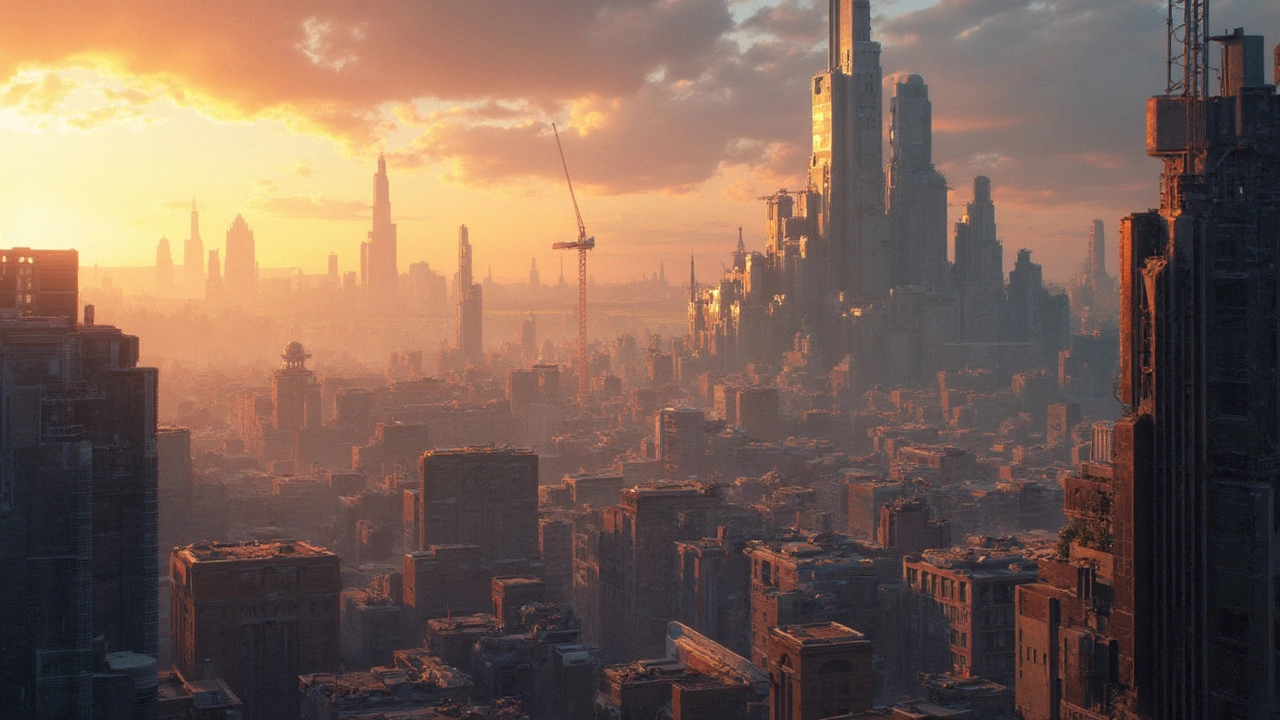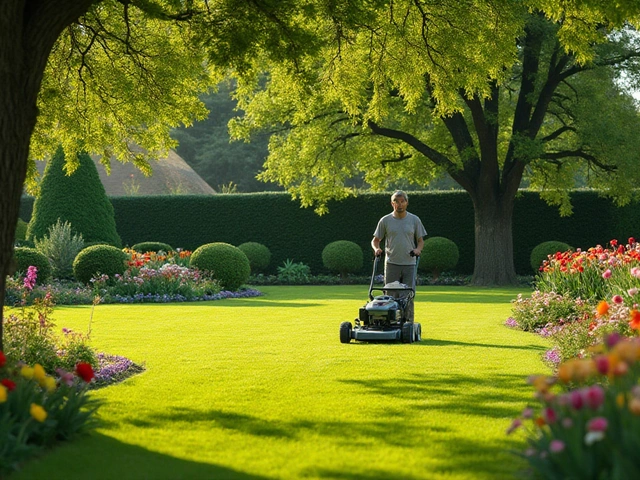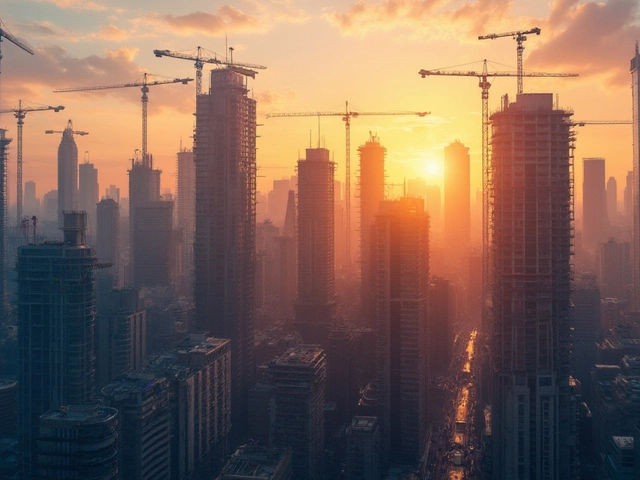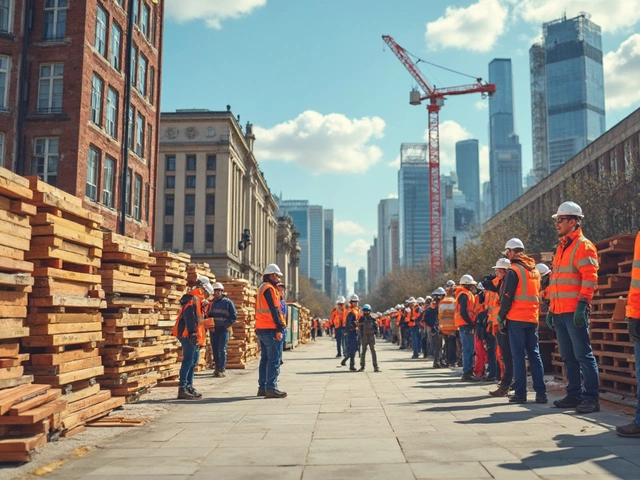Guess what? Not all buildings are made to last forever. Shocking, right? When you're investing in a new construction project, you probably want to know just how long that shiny new building will stick around. There isn't one straight answer because it depends on a bunch of stuff like the materials used, how often it's maintained, and even what the weather's like in your area.
Let's start with the basics. Most new buildings today are designed to last anywhere from 50 to 100 years. Some might even stretch further if they're well-cared for. But it's not just about hitting the century mark. The key here is how the building performs throughout its life - whether it needs minimal repairs or constant TLC.
Materials matter a lot. For instance, concrete and steel are pretty durable, but they each have their quirks. Concrete's solid, but if water gets in, it can weaken over time unless it's sealed and maintained. Steel's super strong, but watch out for rust if you’re in a damp environment.
- The Basics of Building Lifespan
- Materials and Their Impact
- Role of Maintenance in Longevity
- Environmental Factors
- Innovations in Building Durability
The Basics of Building Lifespan
When you hear about a building's lifespan, it's really about how long it can stand while still doing its job without needing tons of repairs. On average, you can expect a new construction to last around 50 to 100 years, but a lot hinges on factors like where you live and how well the building is looked after.
Let's break this down a bit. Residential homes, usually made from wood, might reach the 50-year mark if treated nicely. On the flip side, commercial buildings, crafted from sturdier stuff like steel and concrete, can surpass 100 years when maintained properly. That said, the actual building durability depends on a few key elements.
- Materials: The type used—wood, brick, steel, or concrete—determines the base longevity. Good quality materials typically translate to a longer lifespan.
- Construction techniques: How the building is put together matters big time. Modern methods and skilled labor can ensure a more durable structure.
- Location: Extreme weather conditions, like heavy rainfall or harsh winters, can wear down even the toughest buildings. In coastal areas, salty air can corrode materials faster.
What's also interesting is how technology now plays a role. New innovations aim to extend building life, making them not only long-lasting but also more energy-efficient. It's like getting two bonuses at once!
In crafting long-lasting structures, both builders and buyers should aim for a good mix of solid materials, sound construction practices, and strategic location choices. Investing wisely at the start can save a ton down the road.
Materials and Their Impact
When we talk about how long a building should last, the materials used in construction play a massive role. Choosing the right stuff can mean the difference between a structure that stands the test of time and one that falls apart faster than expected.
Let's kick it off with concrete. It's a go-to for many builders because it's strong and durable. But here's the catch: water is its enemy. If concrete gets too cozy with moisture, it can start to crack and weaken. This is why builders often seal it or use reinforced versions with steel bars.
Steel is another key player. It's like the Superman of construction materials—strong, flexible, and able to handle a lot of pressure. But even Superman has his kryptonite, and for steel, that's rust. In humid areas, if it's not protected properly, steel can rust and lose its strength.
Then there's wood. Some folks might think of wood as old-school, but with the right treatment, it can last a surprising amount of time. Pressure-treated wood can resist rot and pest attacks. Plus, it adds a natural touch that many people love.
But don’t overlook eco-friendly options. Materials like bamboo and recycled plastics are gaining traction. Bamboo's got rapid growth and impressive strength going for it, while recycled plastics help keep waste in check.
Here's some food for thought—a little table to show the estimated lifespan of different materials:
| Material | Expected Lifespan |
|---|---|
| Concrete | 50-100 years |
| Steel | 50-100 years |
| Wood | 30-50 years (treated) |
| Bamboo | 20-25 years (untreated) |
Picking the right materials is just part of the game. You also need to consider the local climate and maintenance practices to make sure your building not only looks good but stands strong through the decades.

Role of Maintenance in Longevity
Alright, so here's the scoop: even the best-built structures can't dodge the effects of time without some TLC. That's where maintenance steps in. Keeping your building in top shape is key to boosting its longevity and ensuring it stays safe and functional, saving you from costly repairs down the line.
First things first, regular inspections are a must. These help catch small issues before they snowball into big problems. Check for things like cracks, leaks, and wear and tear in the structure. A tiny leak might seem harmless at first, but if left unchecked, it can cause serious water damage.
Don't forget about the HVAC systems either. These need to be serviced at least once a year. A well-maintained HVAC not only extends the life of the system but also keeps energy bills from going through the roof.
Here's a quick list of other stuff to keep an eye on:
- Roofing: Inspect for missing shingles or tiles and clean gutters regularly to prevent water damage.
- Paint and Finish: Repainting not only spruces things up but also protects surfaces from moisture and insects.
- Plumbing: Regularly check for leaks and ensure fixtures are in good condition.
- Safety Systems: Regularly test smoke alarms and fire extinguishers to ensure safety standards are met.
Surprising fact: According to a study, buildings with consistent upkeep can extend their lifespan by up to 50%! Crazy, right? That just shows how vital regular maintenance is.
Remember, it's not about waiting for something to break. It's about being proactive. By sticking to a regular maintenance schedule, you're basically giving your building a fighting chance to last as long as possible. And who wouldn’t want that?
Environmental Factors
You might not think about it often, but Mother Nature has a big say in how long your new building will last. It's not just about the materials or design; the environment plays a massive role in determining the lifespan of a building.
First up, let's talk about the climate. If you're in a region with extreme weather, like frequent storms or heavy snowfall, your building will have to endure a lot more stress. Buildings in coastal areas, for instance, face constant threats from salt air and high winds. This can lead to corrosion of metals and erosion of concrete over time, shortening the building's durability.
Temperature fluctuations are another villain in this tale. Huge temperature swings, whether daily or seasonal, can cause materials to expand and contract. Over time, this leads to wear and tear, impacting everything from windows to walls. If you're not prepping for this, you'll see cracks and damage before you know it.
Don’t forget about seismic activity. If you live near a fault line, earthquakes are a serious consideration. Newer buildings often have designs that help them flex during an earthquake, but older structures may not stand up as well. So, ensuring your building is up to local seismic codes is crucial.
Finally, consider the impact of humidity. In particularly damp areas, excessive moisture can seep into the building's fabric, leading to issues like mold, rot, and even structural damage. Using moisture-resistant materials and proper ventilation can help tackle this challenge.
Here's a quick look at how these environmental factors can affect your new build:
| Factor | Impact |
|---|---|
| Coastal Conditions | Corrosion and wind damage |
| Temperature Fluctuations | Material expansion and contraction |
| Seismic Activity | Need for earthquake-resistant designs |
| Humidity | Mold, rot, and potential structural damage |
In short, where you build is just as important as what you build with. Factor these environmental conditions into your planning, and you'll be a step closer to ensuring your building stands the test of time.
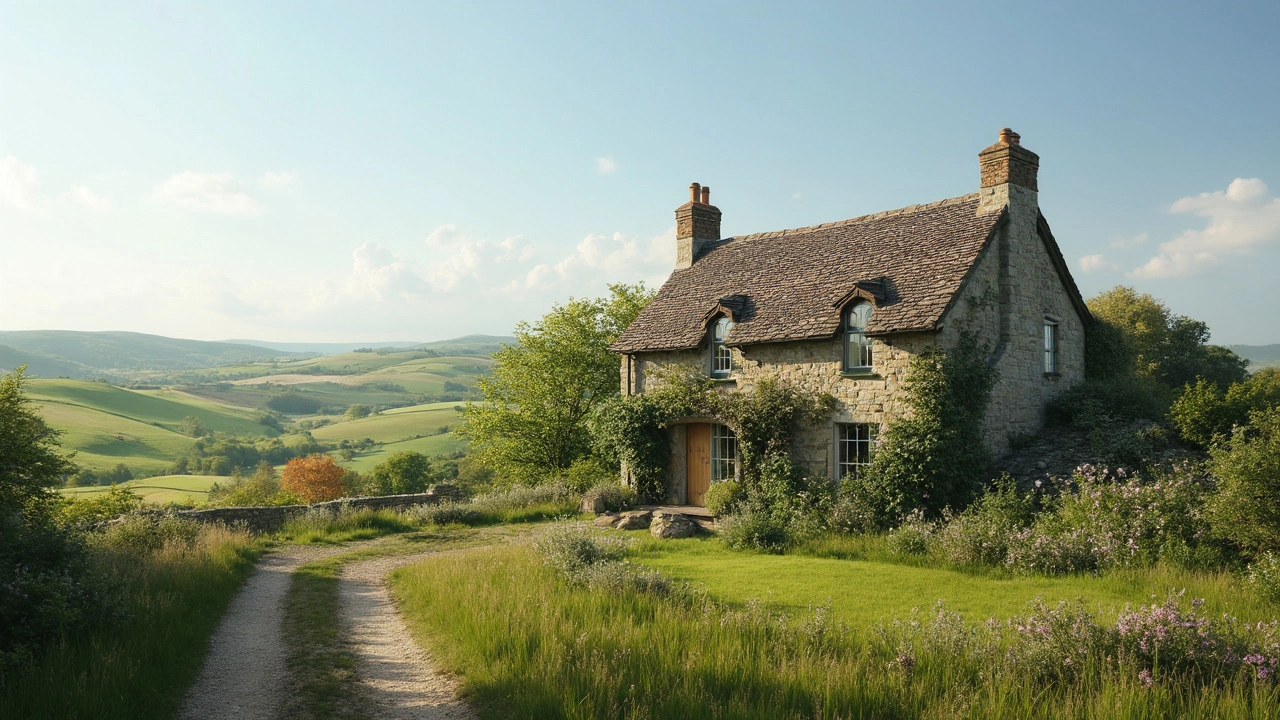
Innovations in Building Durability
Ever heard of buildings that can almost look after themselves? Sounds sci-fi, but the construction world has been buzzing with cool innovations aimed at boosting how long new constructions last. With focus on building durability, these modern strategies are not just changing how we build but how we think about maintenance and longevity.
Let’s talk about self-healing concrete. Yep, you read that right. This cutting-edge material can repair its own cracks. Where traditional concrete might just crumble over time, self-healing concrete uses bacteria mixed with nutrients. When a crack forms, these bacteria get activated by water and produce limestone to fill the gaps.
Then there’s the magic of smart glass and dynamic facades. These innovations help buildings manage energy better. Smart glass adjusts its tint based on sunlight, reducing the need for artificial lighting and cooling. A dynamic facade, on the other hand, can adapt to weather conditions, providing extra insulation when needed and extending the life of the building’s structure.
- Green Roofs: These aren’t just pretty to look at; they help in controlling temperature swings. By having vegetation on rooftops, you’re adding a layer that keeps buildings cooler in the summer and warmer in the winter.
- Advanced moisture control: Using high-tech barriers and new sealant techniques means less water damage over time. This enhancement is critical in increasing a building’s life span, especially in humid locations.
- Robotics in construction: New robots are now being used to lay bricks, pour concrete, and even paint. With precision and consistency, these tech marvels ensure fewer human errors, leading to longer-lasting structures.
Here’s a snapshot of how some of these innovations perform:
| Innovation | Impact on Longevity |
|---|---|
| Self-Healing Concrete | Reduces repair needs by 50% |
| Smart Glass | Cuts energy costs by 20% |
| Green Roofs | Adds 30-40 years to the building's roof life |
This new wave of tech-driven ideas ensures that new constructions don't just stand the test of time but do so while being energy-efficient and cost-effective. It's clear that as we innovate, buildings are becoming not just spaces to live or work in but entities that adapt and endure like never before.

